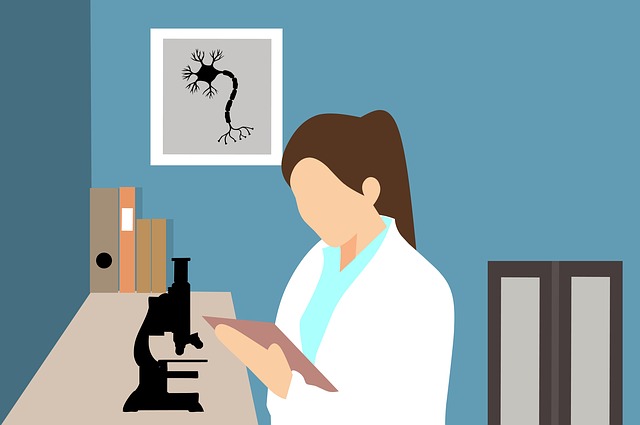Sustainable Development Indicators, 2010-2018 in Turkey
Within the framework of 2030 Agenda for Sustainable Development, adopted at the Sustainable Development Summit of United Nations which was held on 25 September 2015, 17 main goals and 169 targets were determined. In order to monitor achieving the sustainable development goals and targets, an indicator set consisting of 232 global indicators were constituted.Global indicators identified as currently available at national level and proxy indicators considered to be appropriate to measure relevant target are published with this press release as total 100 indicators together with definitions.
Relative at risk of poverty rate decreased by 3.0 percentage point in 2010 – 2018 period
The at-risk of poverty rate according to poverty threshold set at 50% of median equivalised household disposable income was realized as 13.9% in 2018 with a 3.0 percentage point decrease compared to 2010 which was 16.9%. While at risk of poverty rate for individuals under 15 years of age was 24.8% in 2010, this rate realized as 21.6% in 2018. Poverty rate for young population representing the 15-24 age group was 18.5% in 2010 and decreased to 16.1% in 2018.

Total social protection expenditures were 442 billion 607 million TL in 2018 and the share of these expenditures in gross domestic product was realized as 11.9%.
The rate of children under five who are overweight was determined as 8.1%
In 2018, 1.7% of children under five years of age are wasting according to weight for height in Turkey, while 8.1% of children in the same age group are overweight. While proportion of children under five years of age who are overweight decreased by 2.8 points compared to 2013, proportion of children in the same age group who are wasting remained same.
Maternal mortality ratio and under-five mortality rate decreased
While maternal mortality ratio was 16.7 per hundred thousand live births in 2010, this ratio decreased to 13.6 in 2018.
Under-five mortality rate was 11.4 per thousand live births in 2018, compared to 15.5 per thousand live births in 2010. In the same period, neonatal mortality rate dropped from 7.6 to 6.0 per thousand live births.

Proportion of births at hospitals was 91.6% in 2010 and increased to 98.0% in 2018. In the same period, number of physicians per hundred thousand population increased from 167 to 187; number of nurses and midwives increased from 224 to 302.
While proportion of deaths due to cardiovascular disease, cancer, diabetes and chronic respiratory diseases was 73.6% in 2010 this rate was realized as 68.6% in 2018.
Net schooling ratio of age five was 75.2% in 2018
Net schooling ratio of age five was realized as 75.2% and increased by 8.0 percentage point in 2018 compared to 67.2% in 2015.
Early child development index for children aged 3-4 years was calculated as 73.7% in 2018. The index value was 78.0% for girls and 69.8% for boys.
In 2018, 64.0% of primary school teachers were women. While share of female teachers in total was 58.3% for lower secondary school, it was 50.8% for upper secondary education.

Proportion of women in managerial positions was 16.3% in 2018
While proportion of women in managerial positions was 14.4% in 2012, it was realized as 16.3% in 2018.
According to the general parliamentary election results of 2018, proportion of seats held by women in The Grand National Assembly of Turkey was realized as 17.3%. According to the results of parliamentary elections of 1 November 2015, this proportion was 14.7%.
Share of population using safely managed drinking water services was 98.6% in 2018
While share of population using safely managed drinking water services was 98.3% in 2010, it was 98.6% in 2018. Proportion of wastewater safely treated was 72.8% in 2010 and realized as 80.9% with 8.1 percentage point increase in 2018.
While share of households that have natural gas subscription was 51.0% in 2014, this share reached to 63.5% in 2018. Share of population with access to electricity has been 100% since 2010.
Unemployment rate was 11.0% in 2018
While unemployment rate for men was 9.5%, it was 13.9% for women in 2018. The highest unemployment rate in the same year was 22.0% for 20-24 age group.
Average hourly gross wage was estimated as 20.7 TL in 2018. This value was 20.9 TL for men and 20.3 TL for women.
While proportion of youth (aged 15-24 years) neither in employment nor in education or training was 32.3% in 2010, it was 24.5% in 2018. This rate was 15.6% for men and 33.6% for women in 2018.

R&D expenditure as a proportion of GDP reached to 1.03% in 2018
Research and development (R&D) expenditure as a proportion of gross domestic product (GDP) was 0.80% in 2010, this rate was realized as 1.03% in 2018. While number of researchers per million inhabitants was 880 in 2010, this number realized as 1 551 in 2018.
While the value added of manufacturing industry as a proportion of gross domestic product (GDP) was 15.1% in 2010, it was 19.0% with 3.9 percentage point increase in 2018. Manufacturing employment as a proportion of total employment was 18.7% in 2010 and 18.2% in 2018.
While the share of micro-scale enterprises in total manufacturing industry value added was 7.8% in 2010, this share was realized as 4.9% in 2018.

Share of labour payments in gross domestic product was 30.3% in 2018
While share of labour payments in gross domestic product (GDP), comprising wages and social protection transfers was 27.1% in 2010, this ratio was realized as 30.3% in 2018.
As of 2018 proportion of forest area was calculated as 28.5%
While forest area as a proportion of total land area was 27.1% in 2010, this ratio was 28.5% with 1.4 percentage point increase in 2018.
Proportion of individuals using the internet was 71.0% in 2018
Proportion of individuals using the internet was 71.0% in 2018 while it was 37.6% in 2010. This ratio was 78.2% for male and 63.9 for female in 2018. Proportion of individuals who use a mobile telephone in 2018 was estimated as 92.7%. This ratio was 96.3% for male and 89.1% for female.

Net official development assistance as a proportion of GDP was to 1.10% in 2018
The total amount of net official development assistance made by Turkey as donor country increased by about nine times in the period 2010-2018 and was realized as 8 billion 612 million US Dollars in 2018. While net official development assistance as a proportion of gross domestic product (GDP) was 0.13% in 2010, it increased to 1.10% in 2018.
Source: TurkStat
Legal Notice: The information in this article is intended for information purposes only. It is not intended for professional information purposes specific to a person or an institution. Every institution has different requirements because of its own circumstances even though they bear a resemblance to each other. Consequently, it is your interest to consult on an expert before taking a decision based on information stated in this article and putting into practice. Neither Karen Audit nor related person or institutions are not responsible for any damages or losses that might occur in consequence of the use of the information in this article by private or formal, real or legal person and institutions.






